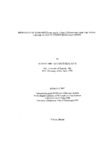Use este identificador para citar ou linkar para este item:
http://www.alice.cnptia.embrapa.br/alice/handle/doc/569257Registro completo de metadados
| Campo DC | Valor | Idioma |
|---|---|---|
| dc.contributor.author | FARIAS NETO, A. L. de | pt_BR |
| dc.date.accessioned | 2011-04-10T11:11:11Z | pt_BR |
| dc.date.available | 2011-04-10T11:11:11Z | pt_BR |
| dc.date.created | 2006-04-17 | pt_BR |
| dc.date.issued | 2005 | pt_BR |
| dc.identifier.citation | 2005. | pt_BR |
| dc.identifier.uri | http://www.alice.cnptia.embrapa.br/alice/handle/doc/569257 | pt_BR |
| dc.description | ABSTRACT: Sudden death syndrome (SDS) caused by the soilborne fungus Fusarium solani f. sp. glycine (FSG) is a major disease in soybean [Glycine max (L.) Merr.]. Slecetion for SDS resistance in the field is difficult because of the impact of the environment on disease development. The objective of my first study was to evaluate the effect of field inoculation methods, soil compaction, and irrigation timing on the occurrence of SDS symptons. Six treatments which included FSG infested grain of white sorghum [Sorghum bicolor (L.) Moench], popcorn (Zea mays everta) or oat (Avena sativa L.) were planted in the furrow with the soybean seed, broadcasted and incorporated into the soil prior to planting or placed below the soybean seed just prior to planting. Three experiments were also conducted to evaluate the effect of compaction and irrigation on SDS symptom occurrence. Irrigation treatments that included water application at V3, V7, R3, R4 and/or R5 growth stages were applied. In all experiments disease incidence (DI) and disease severity (DS) ratings were taken to evaluate foliar SDS symptom and a disease index (DX) was determined. The inoculation methods that produced the most severe foliar symptom included placing infested sorghum below the seed prior to planting (DX=36.1) and planting infested popcorn in the furrow with the soybean seed (DX=28.7). No significant effects of soil compaction on SDS foliar symptom development were observed. The irrigation treatments during mid to late reproductive growth stages resulted in the greatest increases in SDSfoliar symptom development. Evaluation of a great number of lines for SDS resistance in the field is time consuming and expensive. The objective of the second study was to evaluate two SDS greenhouse screening methods and determine which best correlates with field resistance of soybean genotypes. Three sets of genotypes were previously evaluated for field reaction to SDS. All three sets were evaluated with the greenhouse cone method and two sets were evaluated with the greenhouse tray method... | pt_BR |
| dc.language.iso | eng | eng |
| dc.rights | openAccess | eng |
| dc.subject | Plant diseases | pt_BR |
| dc.subject | Fungal | pt_BR |
| dc.subject | Fungal diseases | pt_BR |
| dc.subject | Soybean | pt_BR |
| dc.title | Resistance of soybean [Glycine max (L.) Merr.] to Fusarium solani f. sp. Glycines, causal agent of sudden death syndrome. | pt_BR |
| dc.type | Teses | pt_BR |
| dc.date.updated | 2017-06-29T11:11:11Z | pt_BR |
| dc.subject.thesagro | Cerrado | pt_BR |
| dc.subject.thesagro | Doença Fúngica | pt_BR |
| dc.subject.thesagro | Doença de Planta | pt_BR |
| dc.subject.thesagro | Fungo | pt_BR |
| dc.subject.thesagro | Fusarium Solani | pt_BR |
| dc.subject.thesagro | Glycine Max | pt_BR |
| dc.subject.thesagro | Soja | pt_BR |
| dc.description.notes | Tese (Doctor Philosophy in Crop Science) - University of Illinois at Urbana-Champaign, Urbana. | pt_BR |
| dc.format.extent2 | 101 f. | pt_BR |
| riaa.ainfo.id | 569257 | pt_BR |
| riaa.ainfo.lastupdate | 2017-06-29 | pt_BR |
| Aparece nas coleções: | Tese/dissertação (CPAC)  | |
Arquivos associados a este item:
| Arquivo | Descrição | Tamanho | Formato | |
|---|---|---|---|---|
| fariasneto01.pdf | 1,31 MB | Adobe PDF |  Visualizar/Abrir |









